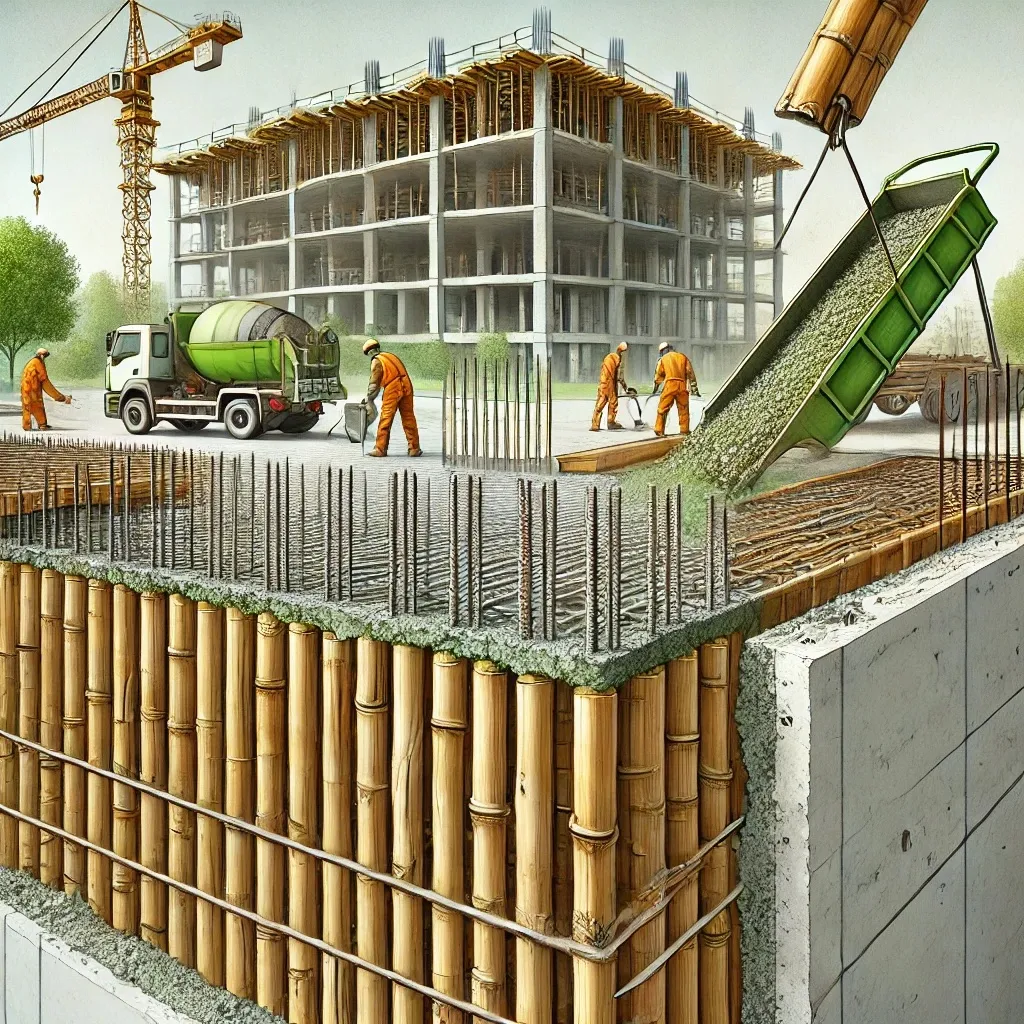In the quest for sustainable construction materials, a novel study has emerged, offering a glimpse into the future of eco-efficient infrastructure. Researchers have turned to an ancient, fast-growing resource—bamboo—to reinforce modern concrete, potentially revolutionizing the way we build.
Shriram Marathe, a civil engineering professor at Nitte (Deemed to be University)’s NMAM Institute of Technology in India, led a team that explored the mechanical performance of bamboo-reinforced geopolymer concrete (GPC). Their findings, published in the *International Journal of Sustainable Engineering* (translated as *Journal of Sustainable Engineering*), suggest that bamboo could be a viable, low-carbon alternative to traditional steel reinforcement in certain applications.
Geopolymer concrete, a sustainable alternative to conventional Ordinary Portland Cement Concrete (OPCC), is made by activating industrial by-products like slag and fly ash with alkaline solutions. Marathe and his team created a GPC mix using a 75:25 binder ratio of slag to fly ash, activated with a sodium silicate-sodium hydroxide solution. They then reinforced this mix with treated bamboo culms from the Biduru species, which were air-dried and coated with insecticide, elastomeric paint, and sand to enhance bond and durability.
The results were promising. GPC exhibited higher compressive, split-tensile, and flexural strengths than OPCC by 18%, 25%, and 13%, respectively. Moreover, the treated bamboo-reinforced GPC beams achieved 55% of the flexural capacity of steel-reinforced OPCC beams, with a 19% improvement in bond strength and a semi-ductile failure response.
“This study confirms the viability of bamboo as a renewable, low-carbon reinforcement for non-critical structural applications,” Marathe said. “It’s a significant step towards sustainable and resilient construction, particularly for rural housing and infrastructure.”
The potential commercial impacts of this research are substantial. The energy sector, in particular, could benefit from the development of sustainable, low-carbon materials for construction. As the world grapples with climate change and the need for sustainable development, innovations like bamboo-reinforced GPC could play a crucial role in reducing the carbon footprint of infrastructure projects.
However, Marathe cautions that further research is needed to understand the long-term durability of bamboo reinforcement under alkaline and environmental exposures. “While our findings are promising, we must ensure the longevity and safety of these materials before widespread adoption,” he said.
The study opens up new avenues for research and development in sustainable construction materials. It challenges the industry to think creatively about integrating natural, renewable resources into modern building practices. As the world seeks to balance economic growth with environmental responsibility, innovations like bamboo-reinforced GPC could pave the way for a more sustainable future.
In the words of Marathe, “This is not just about building stronger structures; it’s about building a stronger, more sustainable future.”

